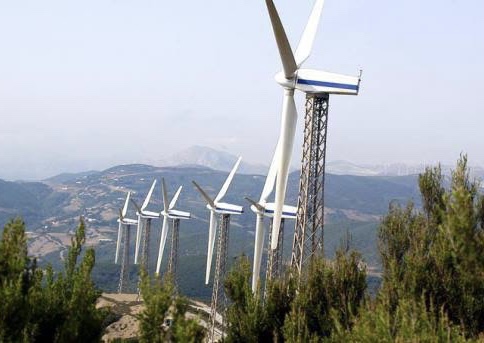Morocco, a leading country in Africa’s renewable energy sector, has taken a significant step towards achieving its green energy goals by launching a tender for a new 400MW wind energy project. The Moroccan Agency for Sustainable Energy (Masen) will manage this initiative, which is a crucial move towards the country’s aim of decarbonizing its electricity system.
The Nassim Nord Wind Programme, the project’s name, will comprise two separate wind farms located in the north of Morocco. The first one, called the Nassim Koudia Al Baida Extension Wind Farm, will have a capacity of around 150MW and will be located in the Fahs-Anjra and M’diq-Fnideq provinces. The second wind farm, the Nassim Dar Chaoui Wind Farm, will be situated in the Tanger and Tétouan provinces and is expected to have a capacity of 250MW.
Masen’s announcement detailed that the project aims not only to increase Morocco’s wind energy capacity but also to enhance private sector participation in renewable energy development. The pre-qualification round seeks to identify a private partner responsible for the financing, construction, and operation of the wind farms. This move is expected to leverage private investment, thereby fostering broader economic benefits and advancing Morocco’s clean energy sector.
The significance of this project extends beyond its immediate environmental benefits. Once operational, these wind farms will play a crucial role in helping Morocco achieve its ambitious energy targets. The government has committed to making renewable sources account for at least 52% of the country’s electricity mix by 2030. This target aligns with Morocco’s broader strategic goals to not only meet its energy needs sustainably but also to become a leading exporter of green energy technologies, including green hydrogen and ammonia.
According to Morocco’s Ministry of Energy Transition and Sustainable Development, the country has the potential to generate up to 25,000MW from wind power alone. This capacity places Morocco second only to South Africa in terms of installed wind energy capacity on the continent, with the current capacity standing at 1,553MW. The new projects are expected to significantly boost this figure as part of a wider national strategy to expand renewable energy production.
This strategy is not just about enhancing energy security or environmental stewardship; it is also about positioning Morocco at the forefront of the global shift towards renewable energy. Located strategically between Europe and Africa, Morocco aims to capitalize on its geographical position and abundant renewable resources to become a hub for the production and export of renewable energy.
The tender process for the Nassim Nord Wind Programme is set to be highly competitive, attracting international and local companies eager to contribute to Morocco’s renewable energy landscape. Interested companies have until 24 June 2024 to submit their applications, with the selection process being stringent to ensure that only the most capable and innovative partners are chosen.
As Morocco continues to advance its renewable energy initiatives, these developments are watched closely by other African nations and global energy markets. The country’s approach offers a model for how nations can leverage their natural resources to foster sustainable development, economic growth, and environmental conservation.
This ambitious project not only reflects Morocco’s commitment to sustainable energy but also its proactive approach to involving the private sector in national development goals. By doing so, Morocco not only enhances its own energy security and economic stability but also contributes to global efforts against climate change, demonstrating leadership in renewable energy that could inspire similar initiatives across Africa and beyond.
As the deadline for the tender submission approaches, the international community and potential investors are keenly observing how this venture unfolds, recognizing that the successful execution of such large-scale renewable projects could set a precedent for future energy developments worldwide.
Source: ESI Africa



